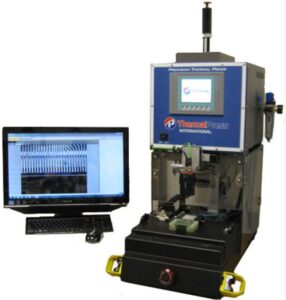
Concepts in Plastic Assembly Stations
While advances in plastic assembly techniques create innovative new products, the process also depends on the operators working efficiently at these stations. Establishing an effective development, test, and production process requires systems that conform to both commercial interests and human physiology.
Considerations for Deploying a Plastic Assembly Line in Your Company
Often overlooked during the product development and design stages, the configuration of plastic assembly stations can have a major impact on your company’s productivity. The long-term effects of working behind a computer is a known health risk, leading to reduced efficiencies and long-term problems when workstations aren’t optimal.
At the same time, in manufacturing, there’s a need for consistency, quality, and repeatability during every run or cycle. Establishing an optimal production process depends on the same considerations any office manager goes through during their daily routines. Here are some of the top design considerations and concepts in plastic assembly stations.
Limiting Safety Issues and Reducing Product Losses
Heat sealing and plastic assembly is a sophisticated process that requires repeatable consistency and demonstrable quality. Setting up the station for the exact task depends on the product design and safety specifications. Including considerations like operator comfort, processing efficiency, and application repeatability should form part of your production facility’s setup.
Focusing on Intuitive and Simple Configurations to Avoid Errors
Whenever setting up a station (for heat sealing or staking), the overall configuration should help eliminate errors from the production process. Access to all necessary materials and a good jig or dye placement will prevent flawed seals or rework while helping the operator remain in a comfortable position that helps improve productivity.
Establishing Quick and Efficient Changeovers
Switching to another type of plastic assembly or seal configuration should not create long downtimes. Using the right platforms and quick-change solutions will ensure a repeatable, efficient, and reliable process whenever swapping out the platform’s tools. Configuring the station for maximum productivity and efficiency requires automation, programming, and administrative controls.
Maximizing the Available Space per Station
The fingerprint of the station can also affect overall productivity. Designing stations for maximum efficiency requires reducing the overall space required while ensuring operators have the necessary access to all tools, materials, and reference information necessary for a reliable process. Using a compact platform that provides maximum versatility can overcome challenges with the available space.
Optimizing Plastic Assembly Stations for Efficiency and Productivity with Thermal Press
Configuring a production station with Thermal Press solutions can help you optimize material insertion, device operations, removal, and cleaning of the platform after use. With greater awareness about the human factors involved in the plastic assembly procedures, your company can improve production facilities for maximum output and limited defects. Thermal Press provides a range of solutions that can support your production environment while also giving your teams process optimization advice during development and scaling initiatives.
To find out how Thermal Press can assist you with your plastic assembly station configurations, speak to one of our agents today.
Tags: configuring production stations, efficient change overs, heat sealing and staking, optimal production process, plastic assembly, plastic assembly techniques, production stations, quick-change solutions